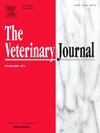呼吸物理疗法在犬肺炎治疗中的应用评价。
IF 3.1
2区 农林科学
Q1 VETERINARY SCIENCES
引用次数: 0
摘要
肺炎经常影响狗,导致气道炎症分泌物积聚。虽然呼吸物理疗法通常用于治疗人类的肺炎,但其对狗的疗效在很大程度上仍未被探索。本研究评估了呼吸物理疗法作为辅助治疗犬肺炎的安全性和有效性。54只患肺炎的狗被纳入研究。干预组(n=16)每日进行物理治疗,并与未进行物理治疗的肺炎历史对照组(n=38)进行比较。物理治疗包括手工技术,如胸壁敲击、振动和体位引流。干预前后测量的主要结果包括脉搏血氧仪和动脉血样本的氧合、呼吸频率、呼吸音、呼吸类型和潜在不良反应评估。最重要的是,呼吸物理疗法被证明是安全可行的,作为一种补充治疗犬肺炎。与入院时的长期水平相比,呼吸物理治疗显著增加了肺炎犬的PaO2(估计变化为9.3mmHg, 95% CI 2.4; 16.2),而对照组未观察到这种变化。然而,两组间无显著差异,这一发现的临床意义尚不确定。与术前相比,物理治疗干预后血氧饱和度短暂升高(估计差异为1.1%,95% CI 0.3; 1.9, P=0.006),但PaO2未观察到这种显著升高,因此限制了结果的解释价值。死亡率、补氧时间或临床参数不一致受到影响。研究结果表明,呼吸物理疗法可能是一种安全的补充方法,可以改善肺炎犬的氧合,但其潜在的益处仍有待于更大规模的对照试验的验证。本文章由计算机程序翻译,如有差异,请以英文原文为准。
Evaluation of use of respiratory physiotherapy in treatment of dogs with pneumonia
Pneumonia frequently affects dogs, leading to the buildup of inflammatory secretions in their airways. While respiratory physiotherapy is often used to treat pneumonia in humans, its efficacy in dogs remains largely unexplored. This study assessed the safety and efficacy of respiratory physiotherapy as a supplementary treatment for canine pneumonia. Fifty-four dogs with pneumonia were included. The intervention group (n = 16) received daily physiotherapy and was compared with a historical control group (n = 38) treated for pneumonia without physiotherapy. Physiotherapy included manual techniques such as chest wall percussion, vibration, and postural drainage. Key outcomes measured before and after the interventions included oxygenation via pulse oximetry and arterial blood samples, respiratory rate, breathing sounds, respiratory type, and assessment of potential adverse effects. Most importantly, respiratory physiotherapy was shown to be safe and feasible as a supplementary treatment in dogs with pneumonia. Respiratory physiotherapy significantly increased PaO2 of dogs with pneumonia compared with their admission levels long-term (estimated change of 9.3 mmHg, 95 % CI 2.4; 16.2), a change not observed in the control group. However, there was no significant difference between groups, making the clinical significance of this finding uncertain. Oxygen saturation increased transiently after the physiotherapy intervention relative to saturation before the procedure (estimated difference of 1.1 %, 95 % CI 0.3; 1.9, P = 0.006), but this significant increase was not observed in PaO2, thereby limiting the interpretive value of the result. Mortality rate, oxygen supplementation length, or clinical parameters were not consistently affected. Findings suggest that respiratory physiotherapy could represent a safe supplementary approach to improving oxygenation in dogs with pneumonia, but its potential benefits remain to be validated in larger, controlled trials.
求助全文
通过发布文献求助,成功后即可免费获取论文全文。
去求助
来源期刊

Veterinary journal
农林科学-兽医学
CiteScore
4.10
自引率
4.50%
发文量
79
审稿时长
40 days
期刊介绍:
The Veterinary Journal (established 1875) publishes worldwide contributions on all aspects of veterinary science and its related subjects. It provides regular book reviews and a short communications section. The journal regularly commissions topical reviews and commentaries on features of major importance. Research areas include infectious diseases, applied biochemistry, parasitology, endocrinology, microbiology, immunology, pathology, pharmacology, physiology, molecular biology, immunogenetics, surgery, ophthalmology, dermatology and oncology.
 求助内容:
求助内容: 应助结果提醒方式:
应助结果提醒方式:


